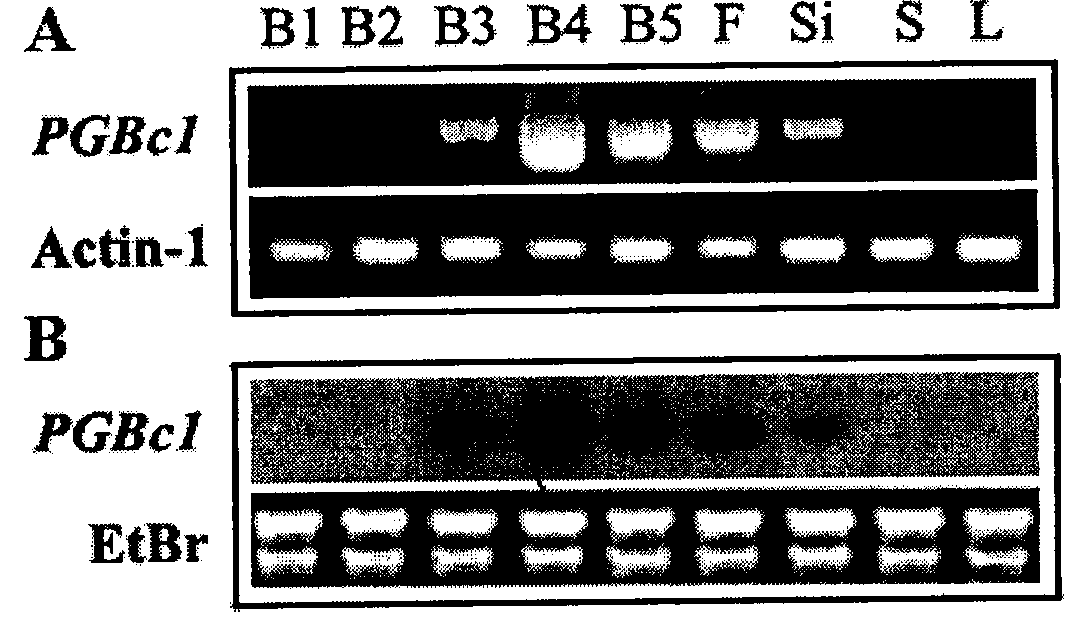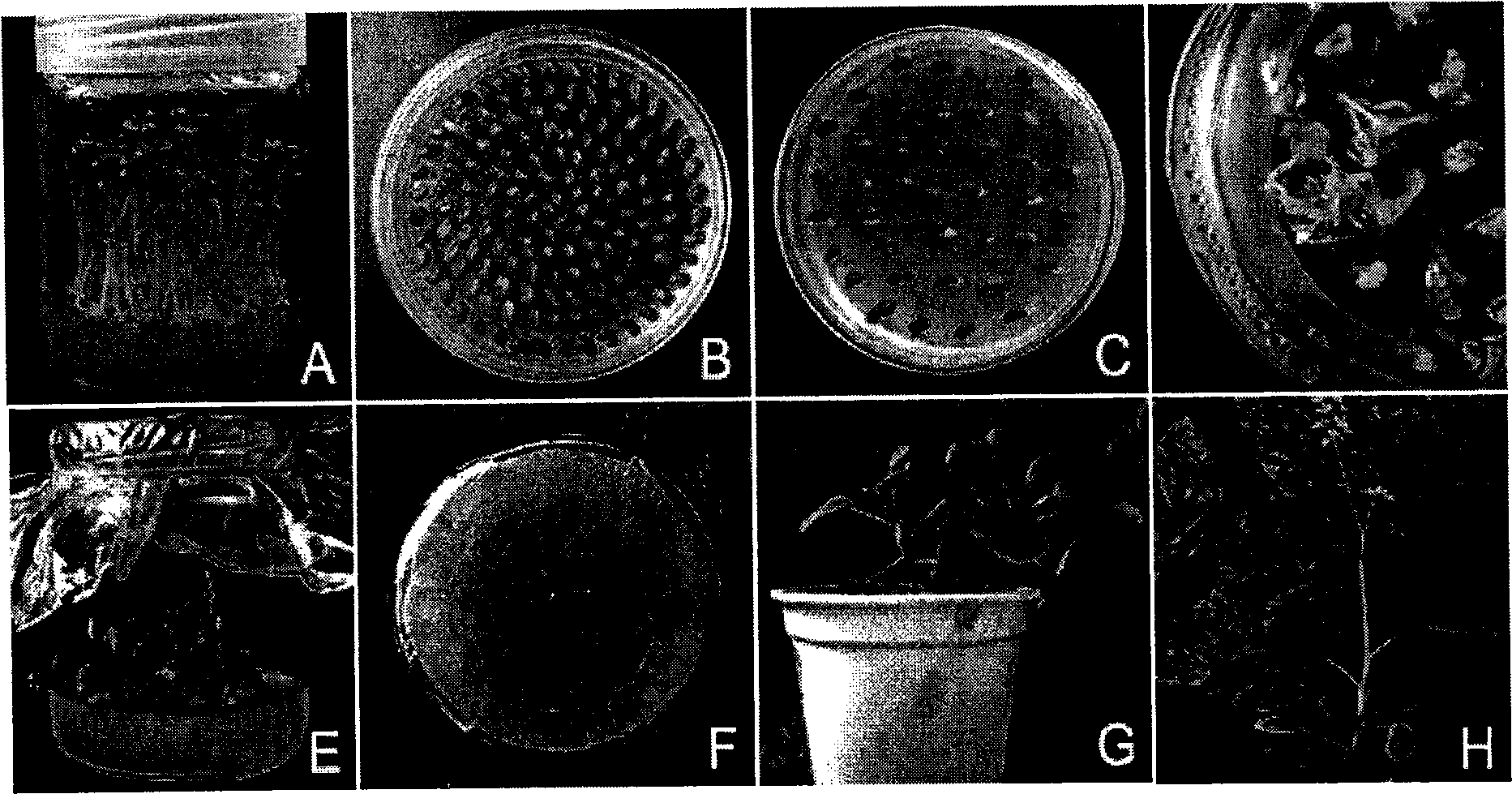Method for acquiring transgenic plant strain by using celery cabbage intine growth correlated gene PGBc1
A technology of transgenic plants, applied in the field of genetic engineering, can solve problems such as lack of examples
- Summary
- Abstract
- Description
- Claims
- Application Information
AI Technical Summary
Problems solved by technology
Method used
Image
Examples
Embodiment 1
[0029] Example 1 Analysis of spatiotemporal expression characteristics of PGBc1
[0030] Materials used for RT-PCR and Northern hybridization analysis were collected from ajhGMS 'Bcajh97-01A / B'. After the fertility can be distinguished, flower buds of different sizes are taken from fertile lines (divided into 5 grades according to the longitudinal diameter, from grade I to grade V: less than 1mm, 1.2-1.6mm, 1.8-2.2mm, 2.4-2.8mm, 3.0~3.4mm), open flowers, siliques, stem leaves and stems.
[0031] The total RNA of each plant tissue above was extracted and the first strand of cDNA was synthesized for PCR. In order to determine the linearity of RT-PCR, 18, 23, 28, 33 and 38 cycles were compared respectively, and finally it was determined that the number of cycles was 28; the ubiquitously expressed Actin-1 was used as a reference, and the PCR product was within 1.2 % agarose gel electrophoresis and verified by sequencing. The experiment was repeated 2 times.
[0032] Northern h...
Embodiment 2
[0033] Example 2 Using antisense RNA technology to verify the function of PGBc1
[0034] (1) Construction of antisense expression vector
[0035] According to the full-length cDNA sequence, primers were designed between the 232nd base to the 680th base in the PGBc1 sequence, and the 449bp sequence was amplified as an antisense gene fragment, see SEQ ID No.2. And according to the multiple cloning enzyme cutting site of the plant binary vector pBI121, design two PCR amplification primers containing BamH I and Xba I restriction endonuclease sites and three protective bases respectively, and the upstream primer is 5'- TAA GGATCC AATGGAGCAGTGGGAAAT-3', the downstream primer is 5'-GCC TCTAGA TGGACGTTGACATTTGT-3' (the underlined part is the enzyme cutting site). The cDNA of flower buds of 'Bcajh97-01B' was used as a template for PCR amplification. The product was cloned into pGEM-T Easy vector, and the positive cloned plasmid was named pTPGBc1A.
[0036] (2) Construction of Ca...
PUM
 Login to View More
Login to View More Abstract
Description
Claims
Application Information
 Login to View More
Login to View More - R&D
- Intellectual Property
- Life Sciences
- Materials
- Tech Scout
- Unparalleled Data Quality
- Higher Quality Content
- 60% Fewer Hallucinations
Browse by: Latest US Patents, China's latest patents, Technical Efficacy Thesaurus, Application Domain, Technology Topic, Popular Technical Reports.
© 2025 PatSnap. All rights reserved.Legal|Privacy policy|Modern Slavery Act Transparency Statement|Sitemap|About US| Contact US: help@patsnap.com



